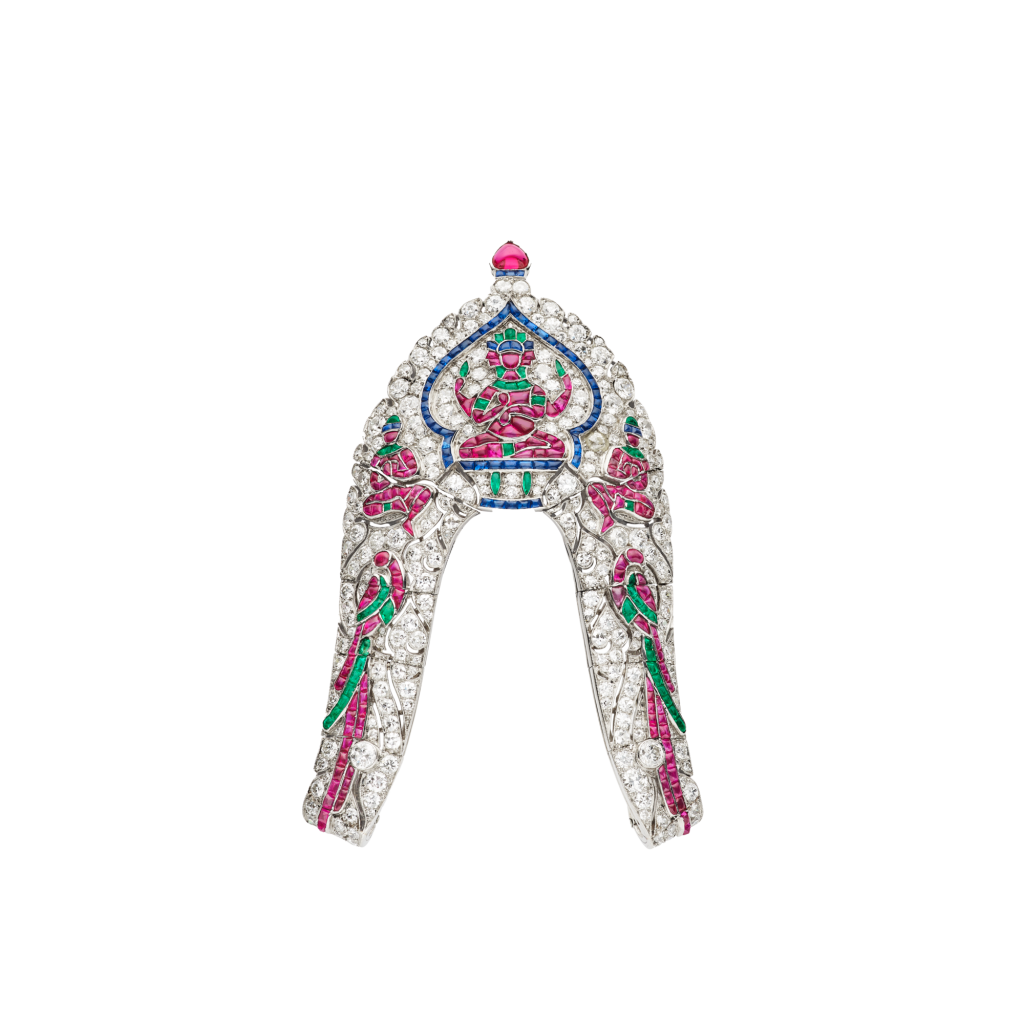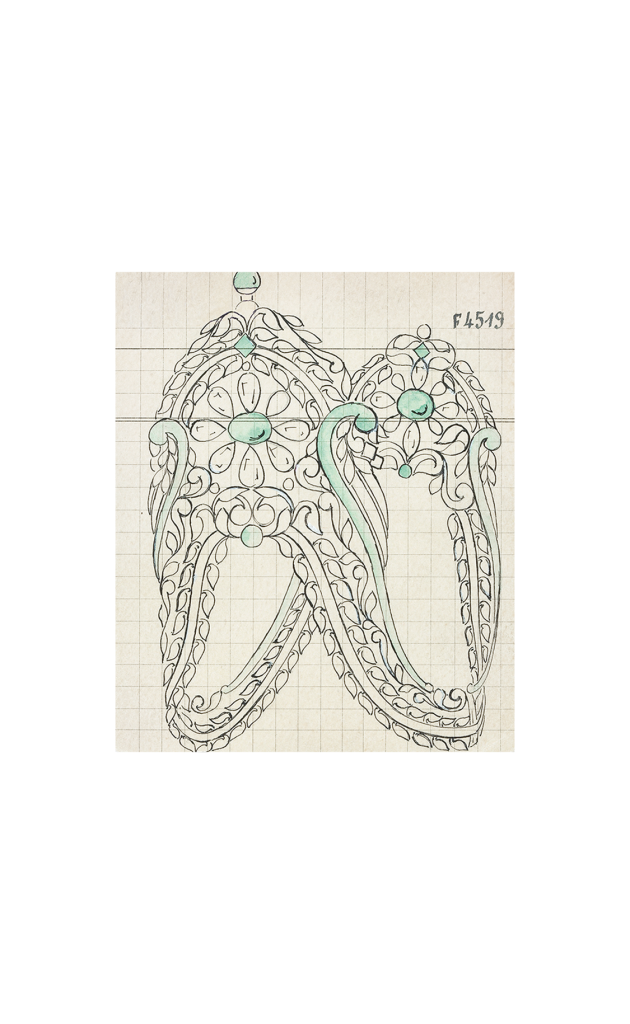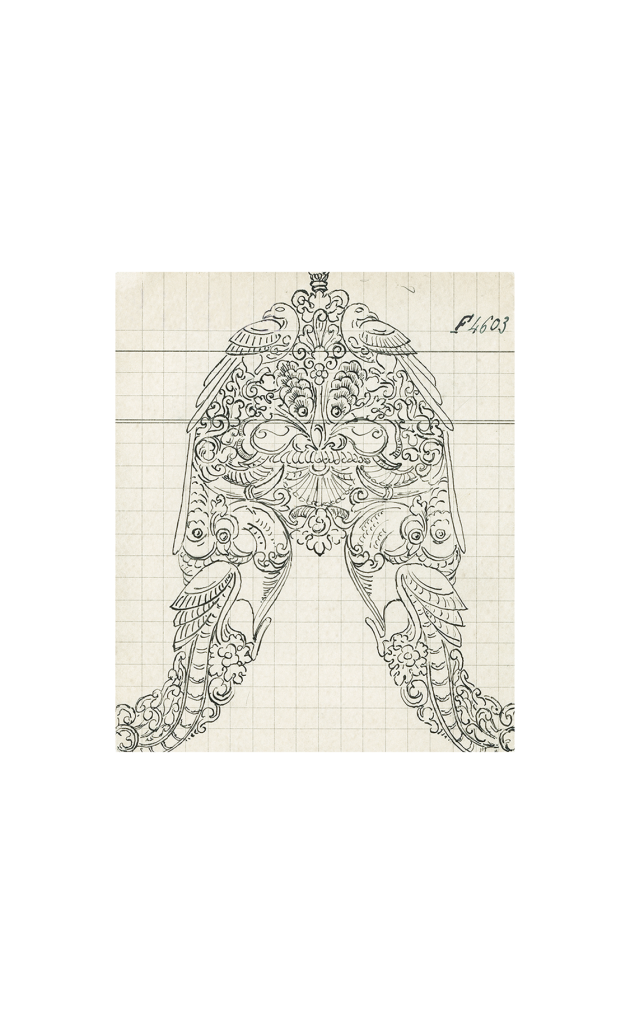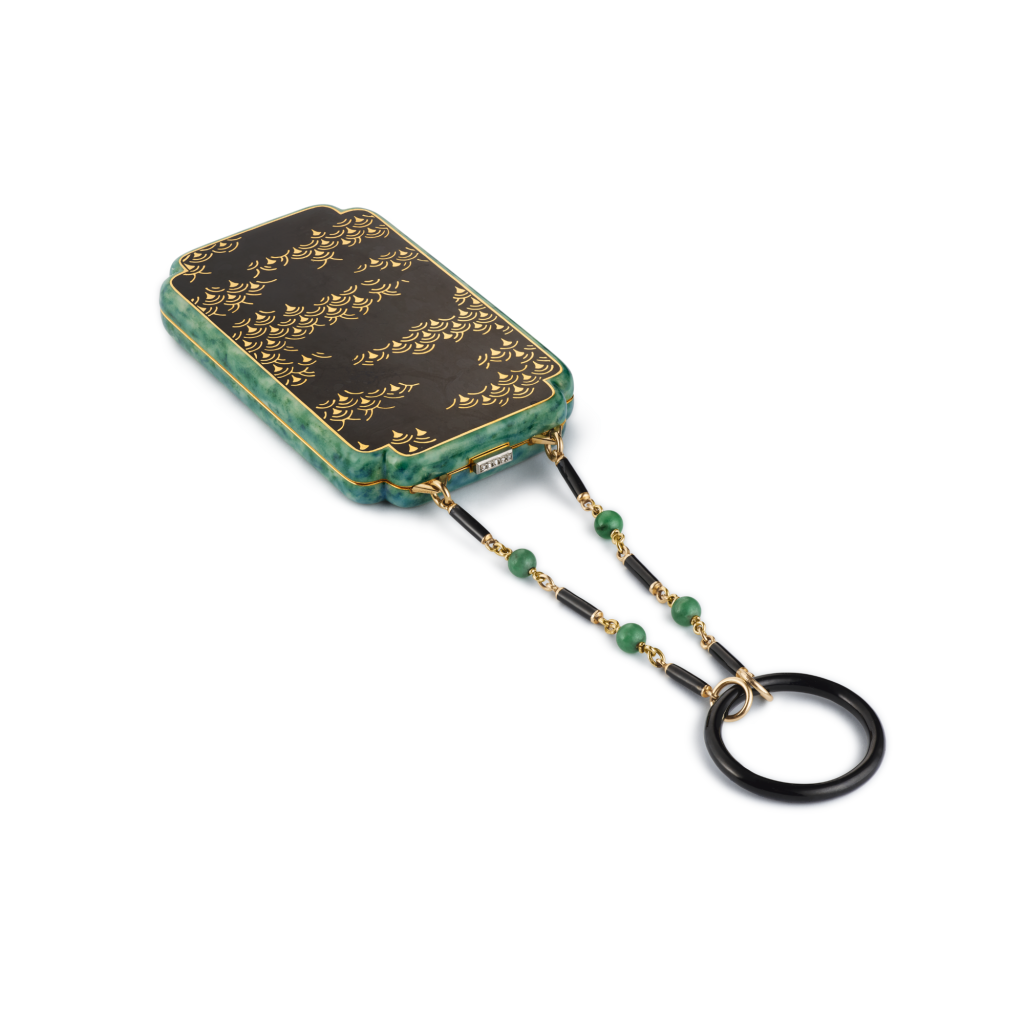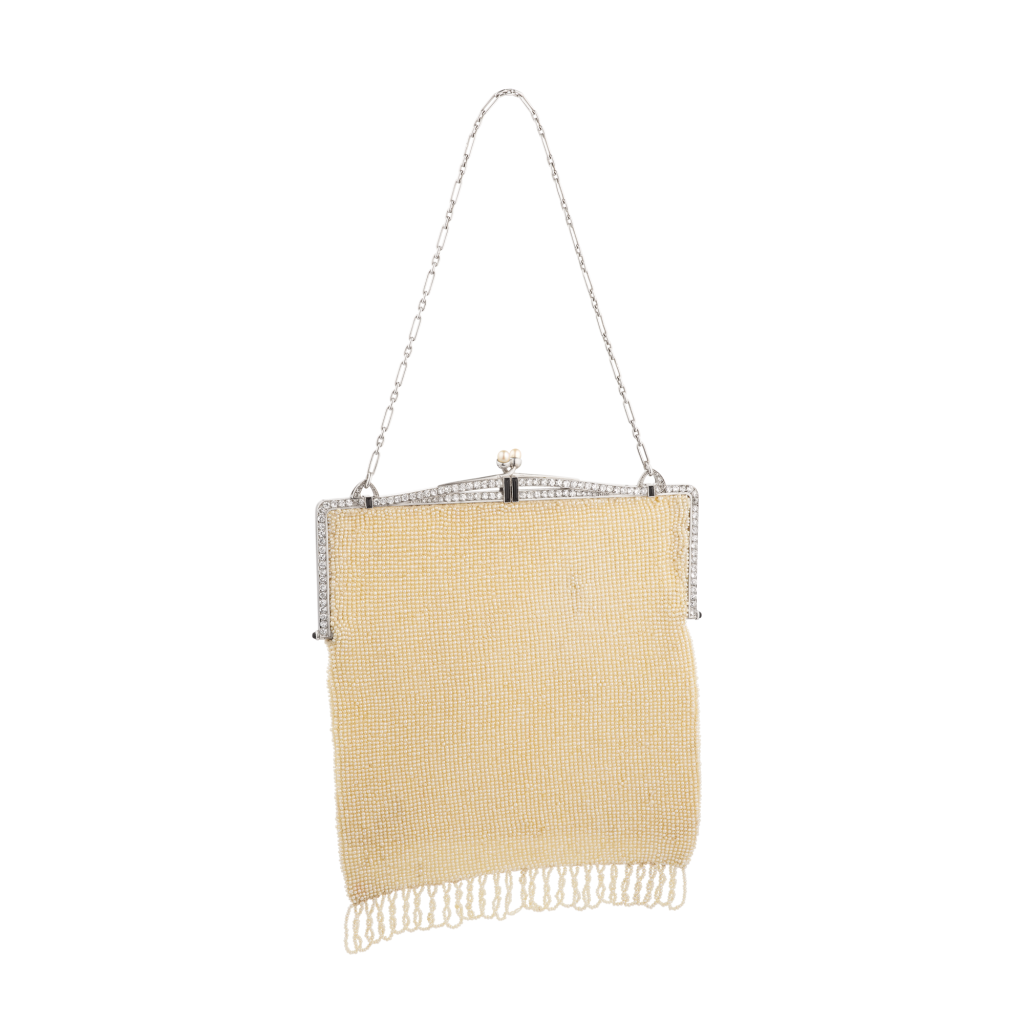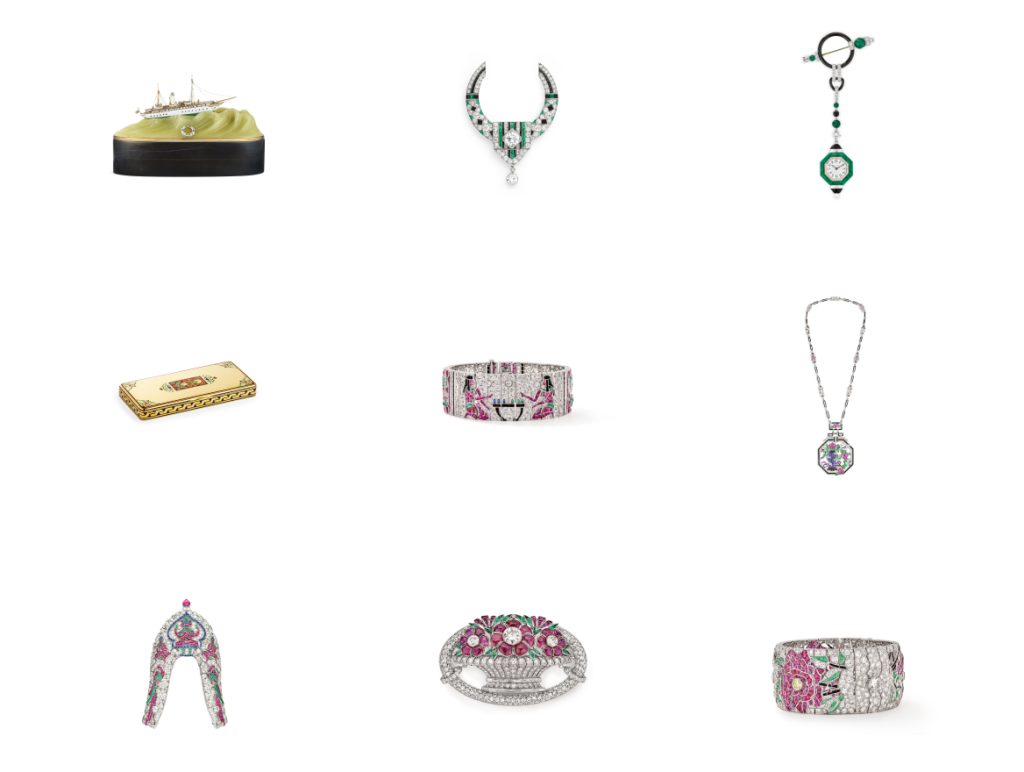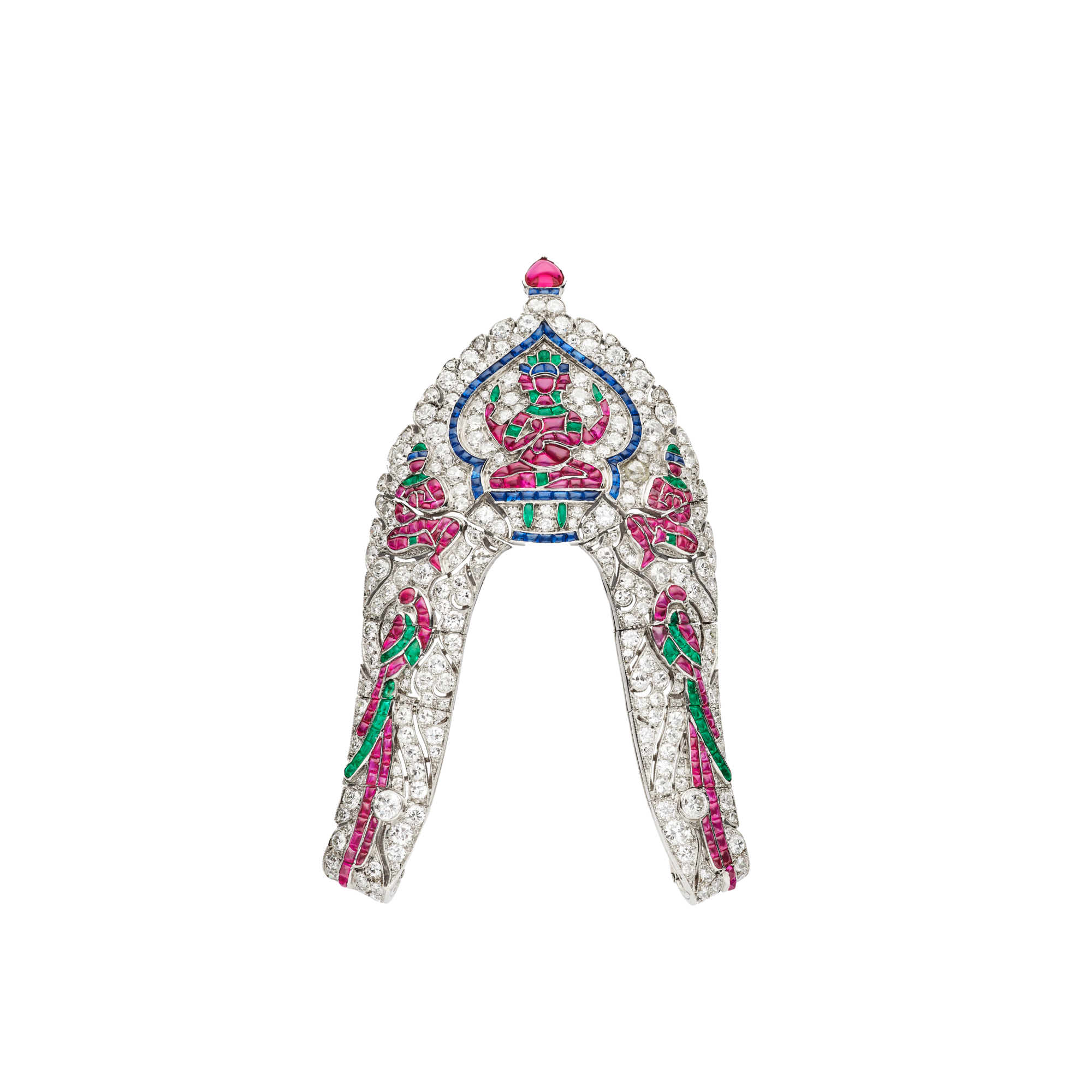
Hindou brooch
Creation details
- Creation year 1924
- Stone Diamond
- Stone Emerald
- Stone Ruby
- Stone Sapphire
- Material Platinum
- Usage Clip
- Dimensions 80 × 52 mm
This brooch illustrates the lively interest of many Art Deco artists in the arts of the Orient, as well as the growing cultural and commercial exchange between Europe and southern Asia in the early twentieth century.
Inspired by the form of an Indian arm ornament, the brooch’s figurative decor is set with rubies, emeralds, and buff-top sapphires on a pave-set ground of brilliant-cut diamonds. The composition is organized around the figure of a Hindu divinity, Brahma, depicted within an onion-shaped niche, flanked by two depictions of another god, Vishnu. The ends of the brooch are decorated with birds viewed in profile, a possible reference to Garuda, one of Vishnu’s attributes. The top of the brooch is crowned with a ruby cabochon at the tip of a row of buff-topped sapphires outlining the god’s niche. This piece underwent numerous transformations before it acquired its present form. In addition to changes of stones, the Archives, which retrace the piece’s history, initially refer to a form of bracelet, typical of Indian jewelry art, and then to a brooch, thus changing its use entirely.
India in the arts décoratifs of the 1920s
India and Southeast Asia provided Art Deco designers, seeking inspiration from afar, with a new ornamental and chromatic language. In the 1910s, the costumed figurines of the Ballets Russes were found on new forms of jewelry, like upper-arm bracelets.
International exchanges
The Indian subcontinent particularly interested jewelers for its famous gemstone deposits. South Asia was of great importance to stonecutters with its legendary mines as well as its vast commercial and stonecutting network that operated on an international scale.1Rémy Canavesio, “Exploitation informelle des pierres précieuses et développement dans les nouveaux pays producteurs. Le cas des fronts pionniers d’Ilakaka à Madagascar” (PhD diss., Université Michel de Montaigne-Bordeaux III, 2010), 84–87.
PRODUCT CARDS OF HINDOU BROOCH
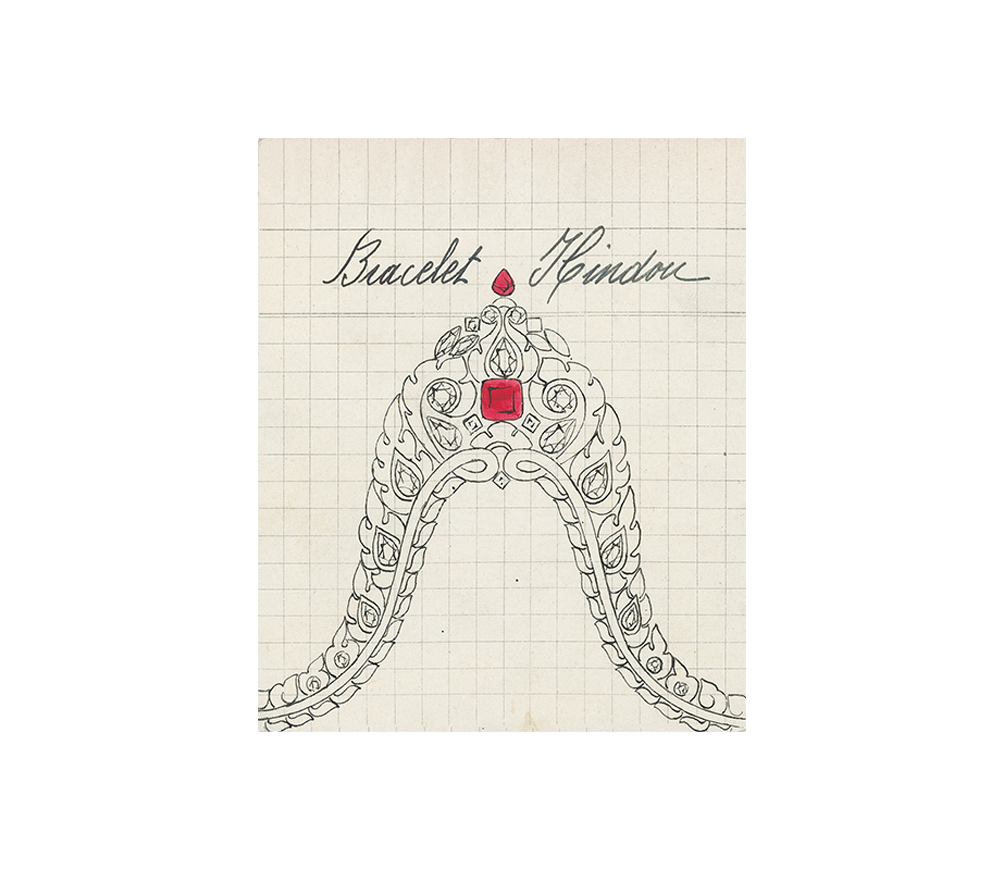
The Maharajahs’ prestigious commissions
In the early decades of the twentieth century, Parisian jewelers also benefited from the growing number of sales of prestigious collections of gemstones and jewelry belonging to maharajas. Indian maharajas were responsible for many of the Place Vendôme’s most prestigious commissions, and some were eminent supporters of the avant-garde in European art. One such was the Maharaja of Indore, a patron of the Berlin architect Eckart Muthesius, who also commissioned numerous jewelry creations by Van Cleef & Arpels.
To go deeper
